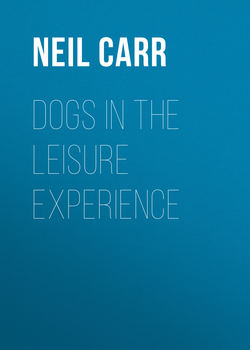Читать книгу Dogs in the Leisure Experience - Neil Carr - Страница 14
На сайте Литреса книга снята с продажи.
Culturally and Temporally Specific Nature of Dogs and Human–Dog Relations
ОглавлениеGiven that the nature of the dog (as viewed by humans) and the dog owner is a cultural construct of humans and that culture is both temporally and spatially specific (Massey and Jess, 1995; Gullotta et al., 2000), it is not surprising that how dogs are viewed and the relations between them and humans are specific to time and place. In this way definitions of the ‘good’ dog and the ‘good’ dog owner are also specific to place and time. While there is plenty of observable evidence to support these claims, and many of this will be highlighted throughout this book, it is worth noting that to date: ‘Cross-cultural comparisons of dog behaviour and dog-keeping practices are limited’ (Wan et al., 2009: 206).
The place and time specific cultural definitions of dogs and their relations with humans colour the rules and regulations relating to the governing of dogs’ behaviour and where they are allowed to go. Consequently, as we will see in this book, laws, rules and regulations governing dogs alter temporally and spatially. This reality also applies to the unwritten social rules about dogs and their owners. Everything from the exercising of dogs, sports associated with dogs and whether dogs are allowed inside the family home and on the furniture, to the eating of dog meat and the provision of cuisine and holidays for dogs are influenced by and specific to culture. When talking about temporal specificity it is important to remember that this refers not only to linear time but also to differences between human generations.
The result, as will be seen throughout the book, is that the experiences and position of dogs in leisure are constantly changing and contested, with conflicts often occurring between different groups. The nature of these conflicts and the philosophical issues they often throw up will be discussed throughout the book with an attempt to provide potential roadmaps that may contribute to conflict resolution. Such paths often entail compromise, as will be seen, but they need to recognize the sentience of dogs so they become actors in the process rather than merely objects that can be positioned at the whim of humanity.
